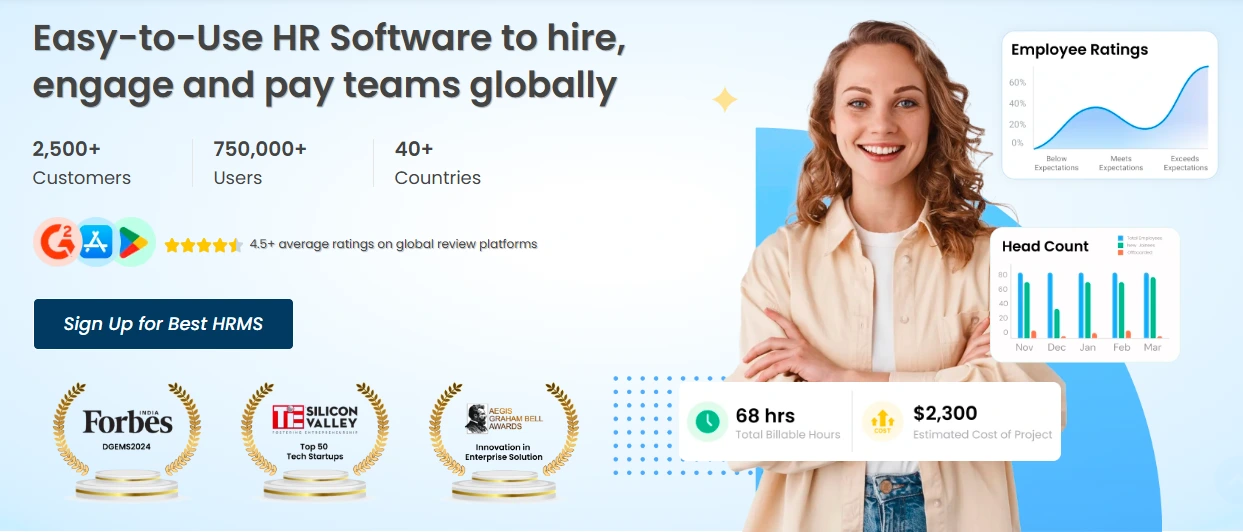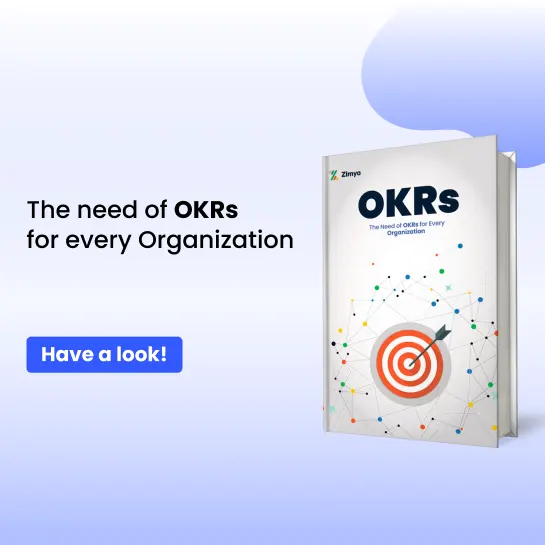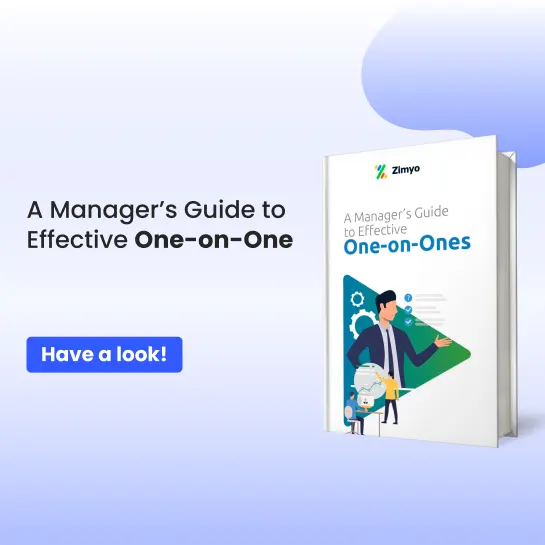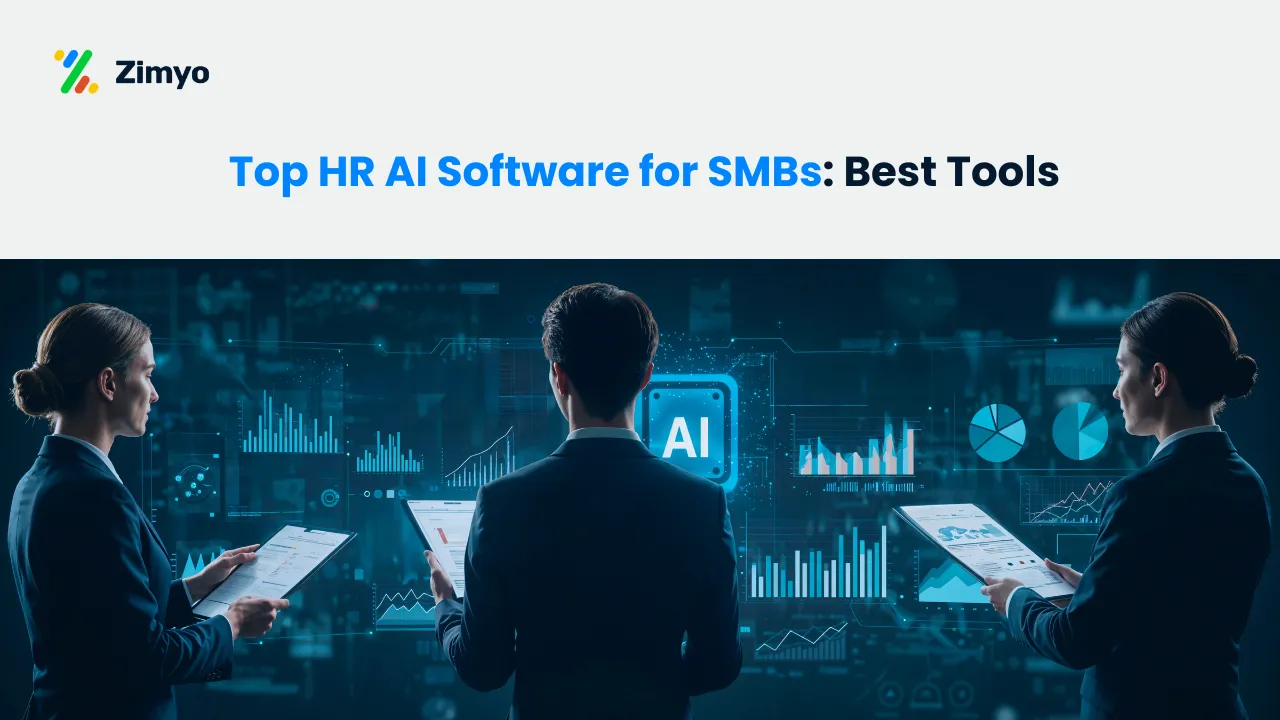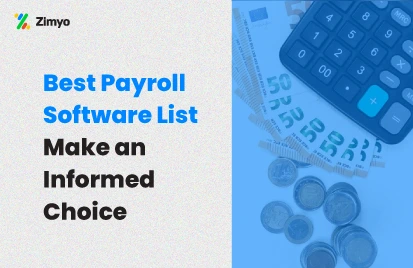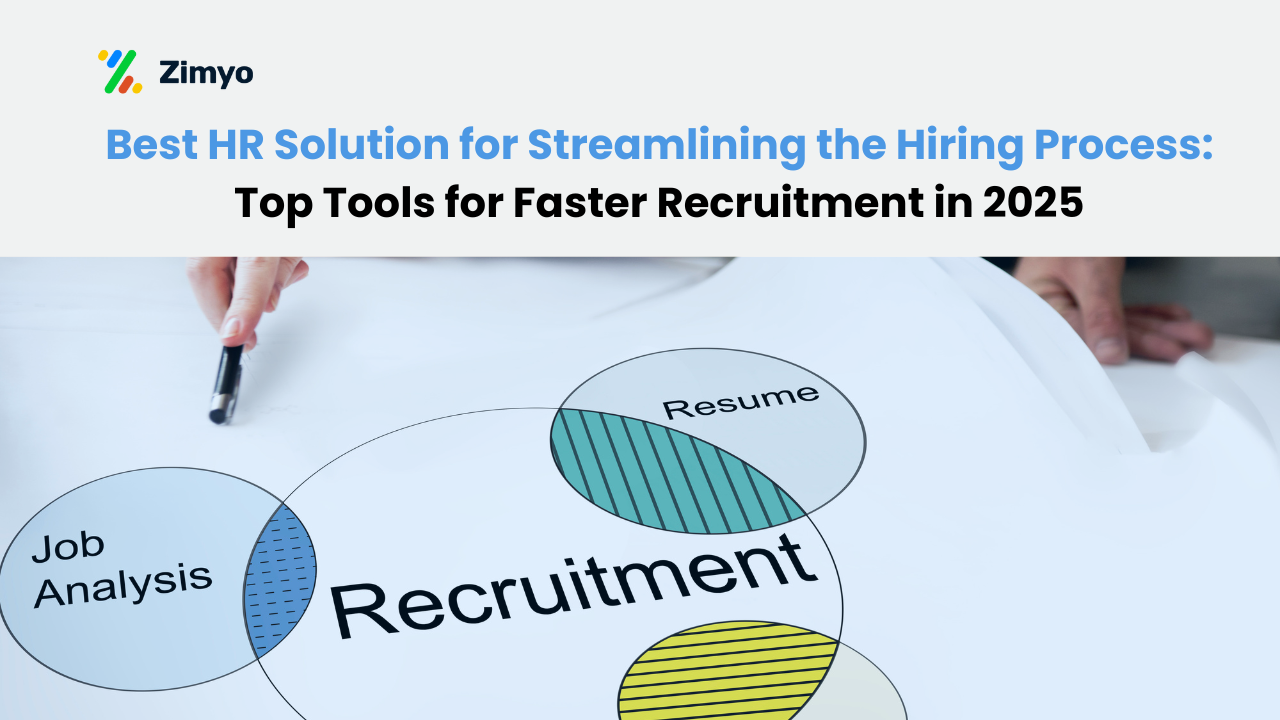Managing employee performance is one of the biggest challenges for service-based firms. A good performance management system helps in structured performance evaluations, setting goals, running performance reviews, and enabling performance improvement plans. Many tools now also integrate application performance monitoring tools to ensure better tracking of both business outcomes and workforce efficiency. Below are the 9 Best Performance Management System For Service Based Companies that provide features like 360 degree appraisal, performance appraisal examples, 360 degree performance appraisal, and modern approaches to employee performance management.
List of the Best Performance Management System for Service Based Companies
Following is the list of the Best Performance Management System for Service Based Companies:
- Zimyo
- Lattice
- PerformYard
- Culture Amp
- BambooHR
- ClearCompany
- 15Five
- Workleap (Officevibe)
- Reflektive
- Betterworks
Now let us understand each of these in detail and know how they are uniquely different from each other.
Best Performance Management System for Service Based Companies
1. Zimyo
Founded in 2018 in Gurugram, India, Zimyo has quickly expanded globally with its modern HR tech suite. It has helped 2000+ organizations streamline employee performance management, engagement, payroll, and HR processes. Today, Zimyo is trusted by startups, SMEs, and service-based enterprises as an all-in-one HR and performance management system.

Unique Features
- 360 degree performance appraisal for fair and transparent performance evaluations.
- Customizable performance review cycles and employee appraisal forms.
- AI-powered analytics for performance evaluation examples and data-driven insights.
- Goal setting (OKRs & KPIs) for tracking employee performance.
- Personalized performance improvement plan (PIP) tools for underperformers.
- Real-time dashboards with application performance monitoring tools-like tracking of workforce metrics.
- Manager and peer feedback for 360 appraisal and continuous performance appraisals.
- Benchmarking with performance appraisal examples across industries.
Pros and Cons
Pros | Cons |
End-to-end employee performance management suite. | Implementation may require initial training. |
Affordable pricing compared to global competitors. | Some advanced analytics are add-ons. |
Built-in performance review + HRMS integration. | Limited offline access (cloud-first). |
Flexible performance management process. | Adoption curve for traditional firms. |
Supports employee appraisal + recognition in one platform. | Newer in the US market compared to giants like Lattice. |
2. Lattice
Founded in 2015 in San Francisco, Lattice quickly became one of the most popular performance management systems, widely used by growth-stage companies for performance reviews and employee performance management.

Unique Features
- Peer-to-peer recognition for employee appraisal.
- Advanced people analytics for performance evaluations.
- Compensation planning tied with performance appraisal.
- Integrated performance management process dashboards.
- Strong integrations (Slack, BambooHR, Salesforce).
Pros and Cons
Pros | Cons |
Robust analytics & compensation tools. | Can feel intrusive during 1:1s. |
Great for 360 appraisal & recognition. | Feedback surveys less customizable. |
Strong all-in-one performance management platform. | Steep learning curve for smaller teams. |
3. PerformYard
Launched in 2015, PerformYard became popular for its customizable performance management process and agile performance appraisal cycles.
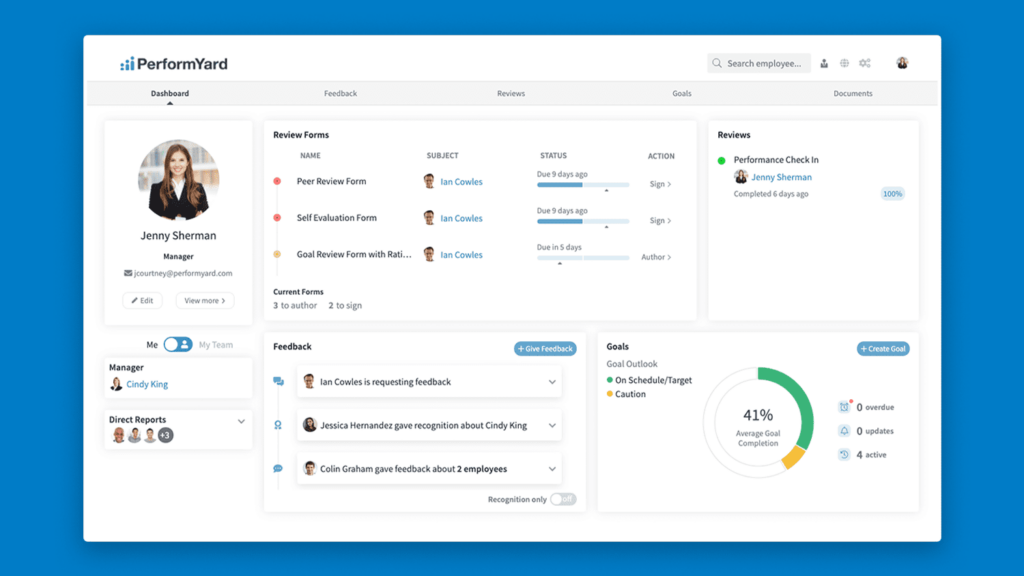
Unique Features
- Customizable 360 degree performance appraisal.
- Mobile-first design (no app required).
- Recognition integrated with Slack/Teams.
- Advanced analytics & performance evaluation examples.
- Maintains full employee performance history.
Pros and Cons
Pros | Cons |
Flexible review workflows. | UI less polished than Lattice. |
Strong analytics for employee appraisal. | Customization adds admin complexity. |
Seamless integrations. | Lesser brand recognition vs. bigger tools. |
4. Culture Amp
Founded in 2011 (Melbourne, HQ in San Francisco), Culture Amp started with employee performance evaluations and engagement surveys, then expanded to performance management and growth-focused solutions.
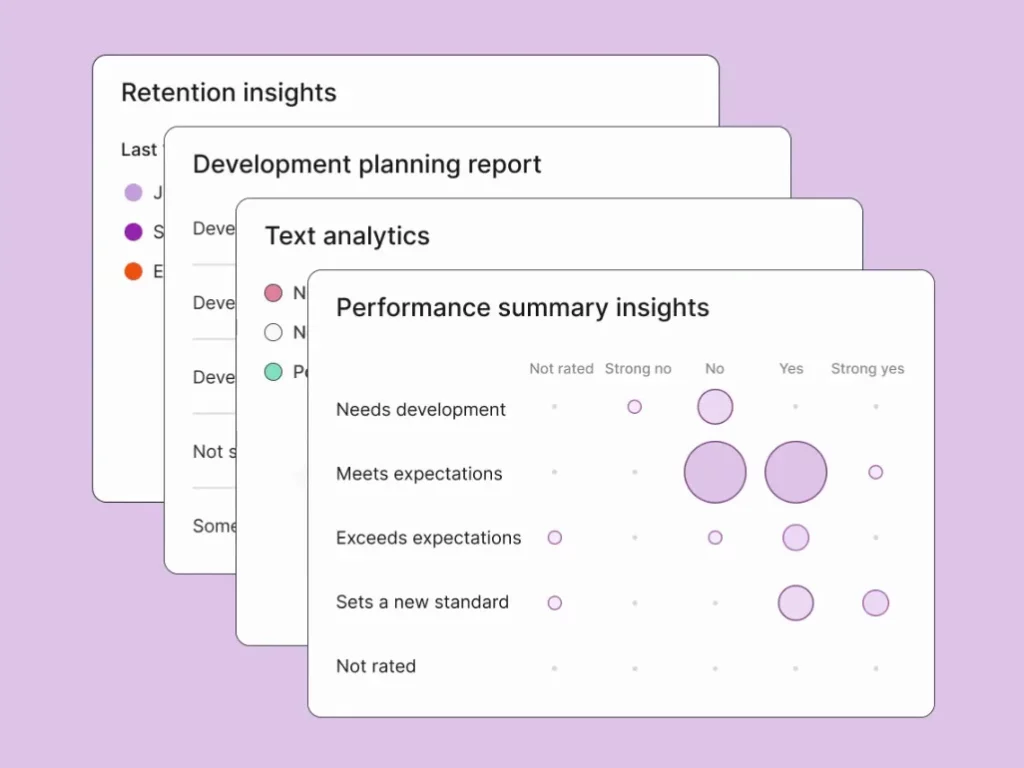
Unique Features
- Research-backed surveys for performance appraisal examples.
- Predictive analytics for retention and employee appraisal.
- AI coaching for managers to improve performance reviews.
- Storyboards simplify performance management process outcomes.
- Updates include application performance monitoring style reporting.
Pros and Cons
Pros | Cons |
Excellent for performance evaluations + engagement. | Survey setup can be complex. |
AI-powered feedback coaching. | Documentation is overwhelming. |
Smooth employee performance management UI. | Notifications inconsistent at times. |
5. BambooHR
Founded in 2008 in Utah, BambooHR is an HRIS that added performance management system features tailored to SMBs.
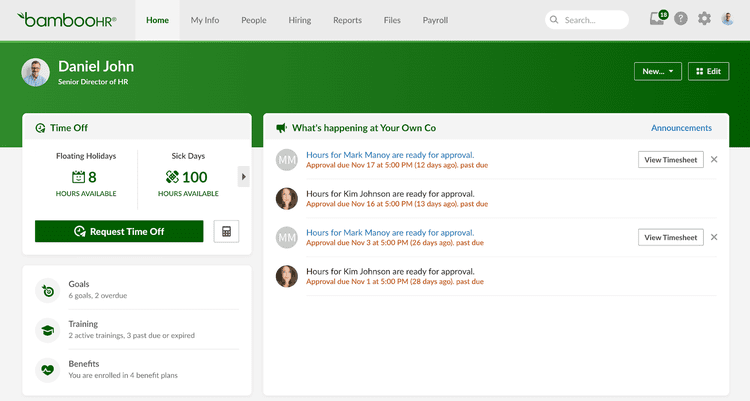
Unique Features
- 360° employee performance appraisal.
- Multiple customizable review cycles.
- Goal tracking with reminders.
- All-in-one HR + ATS + performance appraisal.
Pros and Cons
Pros | Cons |
Easy-to-use performance review platform. | Custom reporting lacks depth. |
Combines HRIS with performance management. | Struggles with large enterprise use. |
Flexible performance appraisal examples. | Support wait times reported. |
6. ClearCompany
Founded in 2004, ClearCompany focuses on unifying recruitment, onboarding, and performance management process.

Unique Features
- ATS + performance management in one system.
- Customizable workflows for employee performance tracking.
- Integrates with payroll & HRIS systems.
Pros and Cons
Pros | Cons |
Great ATS + employee appraisal integration. | UI less intuitive. |
Customizable performance management process. | Support concerns reported. |
Full HR lifecycle coverage. | Expensive compared to others. |
7. 15Five
Launched in 2011, 15Five started as quick check-ins and evolved into a complete performance management system for employee performance management.
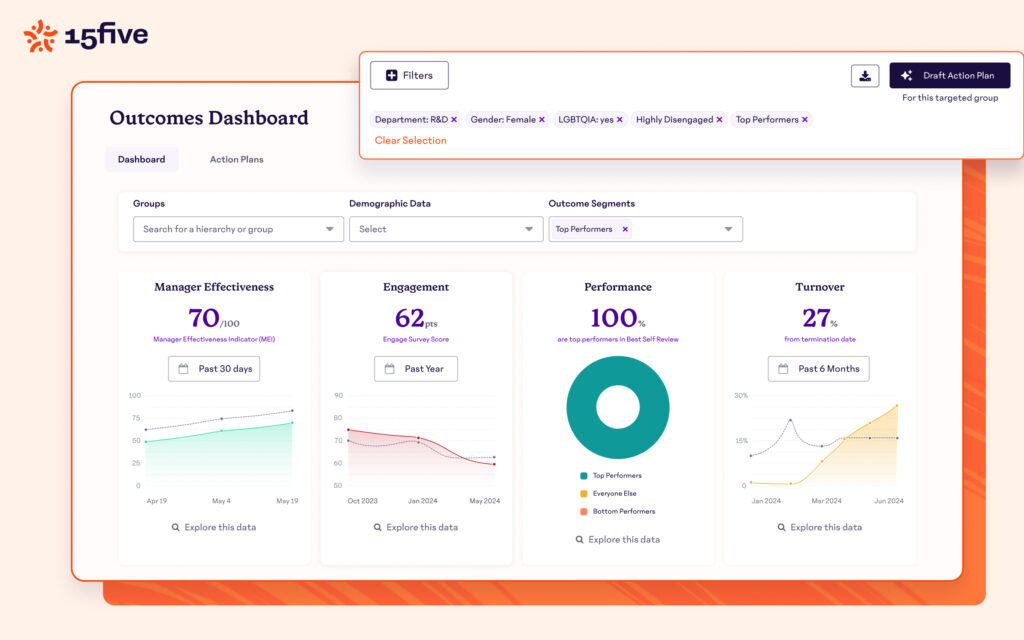
Unique Features
- Best-Self Review® for 360 appraisal.
- Weekly check-ins & OKR tracking for performance improvement plan.
- Recognition with “high-fives”.
- AI-driven performance evaluations dashboards.
- Tools for calibration & performance appraisals.
Pros and Cons
Pros | Cons |
Strong OKR alignment & performance management process. | Can feel like extra workload. |
AI-powered insights for employee performance. | Costly for smaller teams. |
Flexible performance evaluation examples. | Learning curve for adoption. |
8. Workleap (Officevibe)
Founded in 2013 in Canada, Workleap (Officevibe) is well-known for lightweight performance management and feedback.
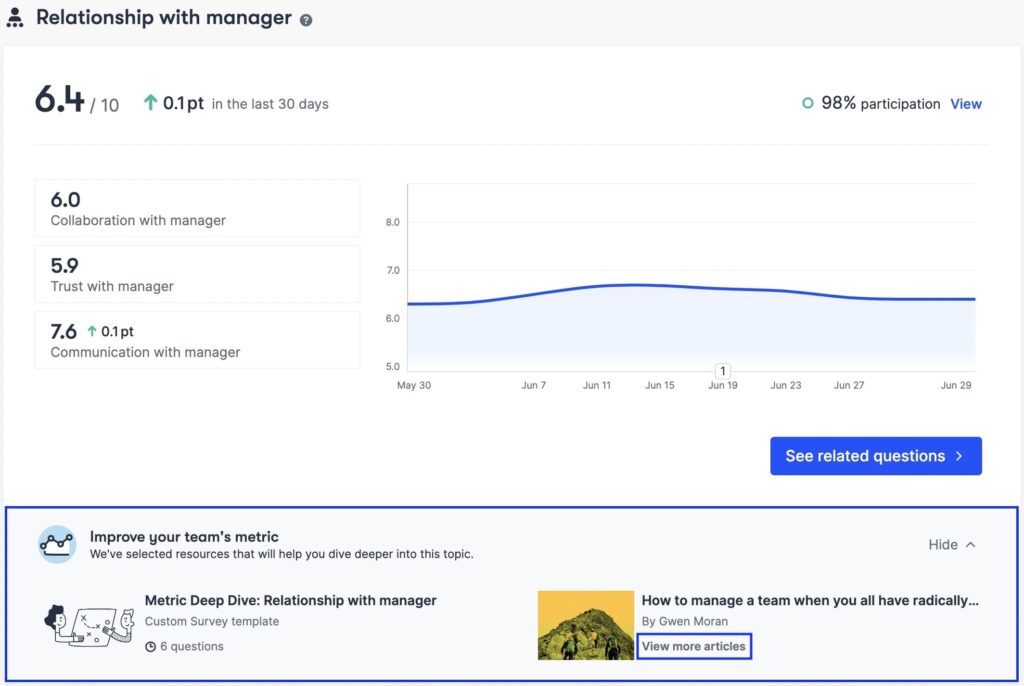
Unique Features
- Simple, co-owned performance reviews.
- Pulse surveys for employee performance management.
- Templates for performance appraisal examples.
- Recognition with “Good Vibes”.
Pros and Cons
Pros | Cons |
Simple & user-friendly. | Limited enterprise-grade performance management. |
Strong employee engagement tools. | Relies heavily on managers to act. |
Lightweight performance improvement plan tools. | Analytics not deep. |
9. Reflektive
Founded in 2014 in San Francisco, Reflektive specializes in real-time employee performance feedback and performance evaluations.
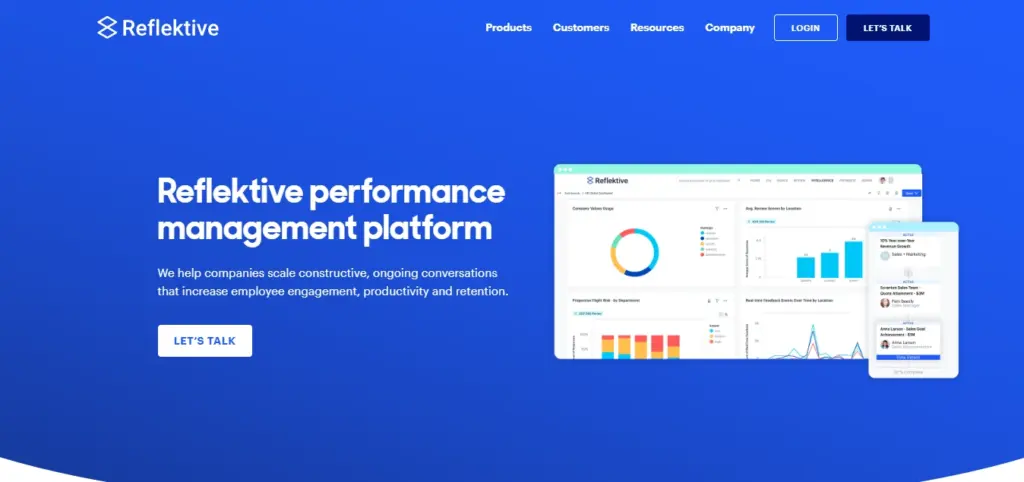
Unique Features
- Real-time performance appraisal via email plug-ins.
- Agile goals and performance review coaching.
- 1:1 meeting templates for employee appraisal.
- Dashboards with application performance monitoring tools style insights.
Pros and Cons
Pros | Cons |
Strong real-time employee performance management. | Integration bugs reported. |
Easy-to-use performance management system. | Limited customization. |
Recognition-first design. | Adoption requires culture shift. |
10. Betterworks
Founded in 2013, Betterworks has John Doerr’s backing and focuses on continuous performance management process and performance evaluations.
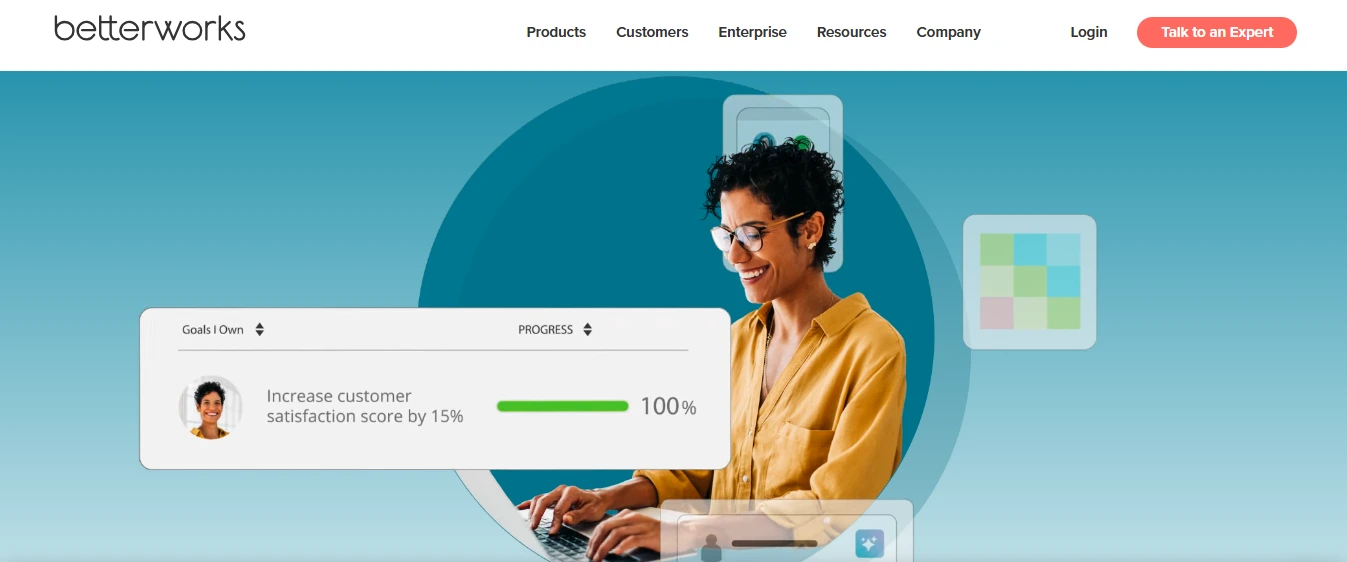
Unique Features
- Continuous conversations + feedback + recognition.
- AI-driven performance improvement plan tools.
- 1:1 orchestration with performance appraisal examples.
- Talent insights, succession planning, and application performance monitoring-style analytics.
- Multilingual support for global performance management.
Pros and Cons
Pros | Cons |
Enterprise-grade employee performance management. | Complex for SMBs. |
AI-based performance review assistance. | Implementation is heavy. |
Deep analytics with application performance monitoring tools. | Higher cost. |
Top Benefits of Using a Performance Management System for Service Based Companies
Here’s a table of benefits of using a Performance Management System for service based companies, with real-world examples to make each point actionable:
Benefit | Explanation | Real-World Example |
Enhanced Employee Performance | Tracks individual goals and productivity, helping employees focus on key priorities. | A consulting firm uses PMS to set weekly project targets, increasing billable hours by 15%. |
Structured Performance Reviews | Enables systematic 360-degree feedback and regular reviews, reducing bias. | A hotel chain conducts quarterly 360-degree appraisals, improving service quality and guest satisfaction scores. |
Goal Alignment with Business Objectives | Links employee tasks to company goals, ensuring team efforts support company strategy. | A software services company aligns developer KPIs with client delivery deadlines, boosting on-time delivery by 20%. |
Data-Driven Insights | Provides analytics on employee performance and trends to support HR decisions. | An IT support firm uses PMS reports to identify low-performing agents and offers targeted training. |
Improved Employee Engagement | Continuous feedback and recognition increase motivation and retention. | A call center uses PMS to give instant recognition for problem-solving, reducing attrition by 10%. |
Efficient Performance Improvement Plans | Helps managers identify skill gaps and implement timely improvement plans. | A marketing agency identifies underperforming account managers and sets up PIPs, leading to performance improvement in 3 months. |
Time & Cost Savings | Automates performance management, reducing manual tracking and HR workload. | A staffing company cuts HR admin time by 30% by using PMS dashboards for performance reviews. |
Compliance & Documentation | Maintains performance records and appraisal examples for audits. | A healthcare service provider uses PMS logs for employee audits and compliance reporting. |
Supports Scalable Growth | PMS adapts as the company grows, supporting multiple teams and projects. | A growing logistics firm tracks performance across 50+ branches, ensuring consistent service quality. |
Steps to Choose the Best Performance Management System for Service Based Companies
While selecting one of the Best Performance Management System for Service Based Companies, a Manager or CEO should follow these important steps:
1. Identify Your Company’s Performance Needs
Determine whether you need 360 degree performance appraisal, goal tracking, employee performance management, performance evaluation examples, or performance improvement plan tools.
↓
2. Set a Budget
Decide how much your service-based company can invest in a performance management system, considering both SMB and enterprise pricing options.
↓
3. Check Key Features
Look for features like:
- Performance appraisal and 360 appraisal
- Goal setting and tracking (OKRs/KPIs)
- AI-powered analytics for employee performance
- Dashboards and reporting for performance evaluations
↓
4. Evaluate Integration with Existing Tools
Ensure the PMS integrates with your current HRMS, payroll, project management, and CRM tools for seamless employee performance management.
↓
5. Consider User Experience
Choose a system that is team-friendly, easy for managers and employees to use, and supports smooth performance review cycles.
↓
6. Look for Scalability & Customization
Check if the PMS can handle growing teams, multiple projects, and customizable performance appraisal examples as your service company expands.
↓
7. Read Reviews & Request Demos
Check PMS reviews, testimonials, and request live demos to understand real-world performance evaluation examples and usability.
↓
8. Compare Pricing and ROI
Analyze costs versus potential ROI from improved employee performance, reduced attrition, and enhanced performance management process efficiency.
↓
9. Make the Final Decision
Choose the Best Performance Management System for Service-Based Companies that aligns with your goals, company size, and long-term growth strategy.
Conclusion
Choosing the Best Performance Management System for Service-Based Companies is a critical decision that can directly impact employee performance, engagement, and overall business outcomes. By following a structured approach, identifying your needs, evaluating key features, checking integrations, considering scalability, and reviewing demos, you can select a PMS that streamlines your performance management process, supports 360 degree appraisals, and drives measurable results. The right system ensures transparent performance evaluations, effective performance improvement plans, and a motivated workforce ready to achieve your company’s goals.

